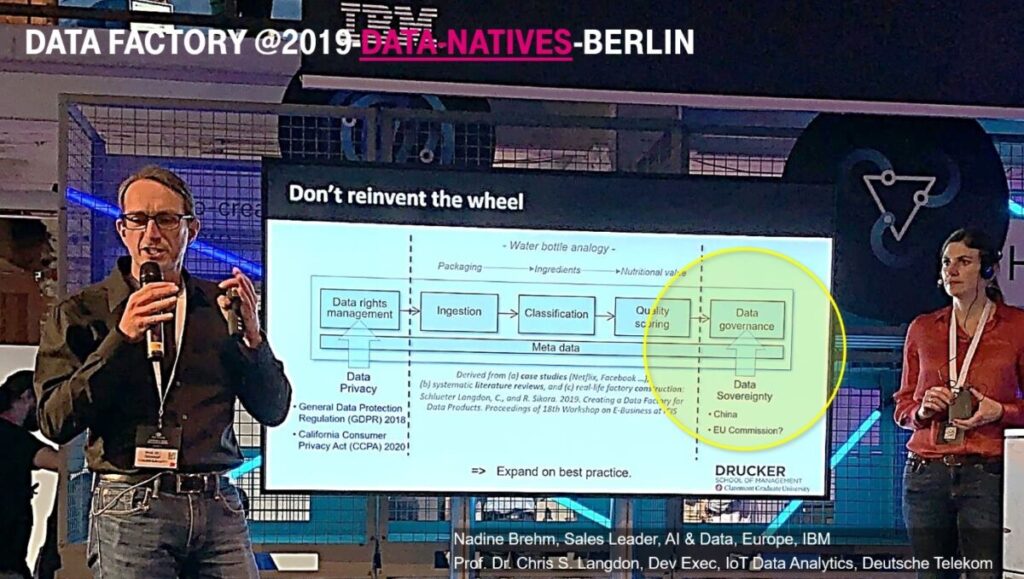Data Natives “is Europe’s largest event platform for the data-driven generation”. Founded in 2015 it has grown to 70,000+ community members, with 50+ events in key tech hubs and with an annual Data Natives flagship conference in Berlin.
The last Data Natives was hosted in the Kühlhaus event space, build in 1901 as Europe’s largest “fridge” and located near the old Anhalter Bahnhof at Gleisdreieck just south of the famous Potsdam Plaza in Berlin. Inside Kühlhaus the contrast could not have been starker: No history but everything was focused on the future of data. More than 180 speakers and 28 satellite events laid out the state of the art in data science and engineering. And IDSA was there, too, right in the middle of it on center stage as part of a joint presentation of IBM and the Telekom Data Intelligence Hub (see Figure 1).

I was honored to join the stage with Nadine Brehm, IBM’s sales leader for Artificial Intelligence & Data in Germany. We presented on “Implementing a Data Ops Strategy to Build Up a Data Factory.” The talk is motivated by today’s data disaster: too much time spent on data instead of analytics results. Today, 80+% of the time budget of a data analytics project is spent on data collection, extraction and refinement (for facts and figures, click here). Today, data analytics is following the Pareto principle, a business efficiency indicator, in reverse, and consequently, data analytics is not scaling.
Data factory with data sovereignty by IDSA
Leading tech companies, like IBM and Deutsche Telekom, are investing to solve this problem. Nadine and I are actively involved in these efforts and we were able to share first results with Europe’s data experts: Devise a data ops strategy and implement it with a data factory (see Figure 2).

The analogy is how Henry Ford changed the auto business with automation to high volume production and distribution. Data needs similar treatment to scale. Today, the Telekom DIH is already offering a data exchange solution called “Marketplace”. The city of Bonn is a customer, for example. A data exchange or portal is great, because it allows data scientists to find, collect and aggregate or pool data, particularly for data-hungry artificial intelligence applications. However, one problem with data exchange or sharing is loss of control.
How to protect your rights to the data, how to ensure data sovereignty, how to manage data governance as your data leaves the factory? One solution is the IDS standard born from Fraunhofer R&D. It has been further developed by the research community around Prof. Dr. Boris Otto, head of Fraunhofer ISST, and expanded into the pan-European initiative of IDSA, today. At the 2019 Hannover Fair the Telekom DIH presented the first IDS_ready Trusted Connector, our Version 1.0. At Data Natives I was able to report steady progress and bring along our Trusted Connector Version 1.1.
This article is based on a longer piece on the Data Intelligence Hub Journal.








